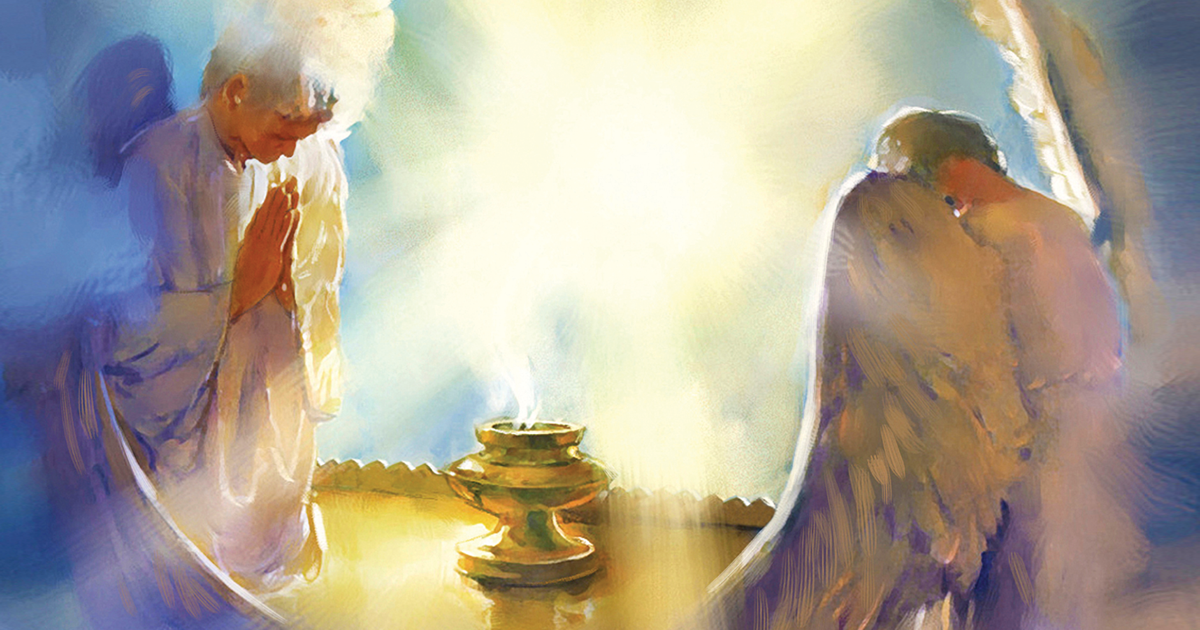The Mercy Seat
The intersection between needy people and a loving, caring and forgiving God.
The holiest spot in the holiest place of the Tabernacle of the Lord was the Mercy Seat. Hammered from a solid piece of gold, it served as the lid of the Ark of the Covenant. It was breathtakingly beautiful with the angels’ wings arching over it that spoke of Heaven itself as it should since it was here that God chose to manifest His presence.
The word for Mercy Seat in Hebrew is kapporeth, meaning “a place of covering.” Of course, it was the covering of the Ark but more than that it speaks of the covering for sin, further emphasized by the yearly sprinkling of blood upon it. The necessity of a sacrifice points out once again how greatly our sin grieves God. In the Tabernacle this message is repeated at the Brazen Altar, the Laver, the sacrifices associated with the Golden Altar, the Golden Lampstand and the Table of Shewbread. All have some form of sacrifice that must be offered because we as a people are sinful. Sin must be reckoned with so that our God who is wrapped in holiness can allow us to approach Him.
On the Day of Atonement the High Priest entered the Holy of Holies to sprinkle the Mercy Seat with the blood of a lamb of sacrifice. And God, seeing the penalty of sin paid by the lamb’s blood forgave the people. This provision is known by the theological term “propitiation,” meaning an offering to appease God who has been deeply offended by our wrongdoing. In the same way, Christ, the pure Lamb of God, has shed His blood to make a provision for covering of our sin. But Christ has gone further. As the book of Hebrews points out, Christ is our High Priest (Hebrews 4:1-16). In His unique place as the Son of God and the Son of Man, He is both the one who offers the sacrifice and is the sacrifice.
The Holy of Holies could only be accessed through the veil that separated it from the Holy Place. The Golden Lampstand illuminated the Holy Place but in the Holy of Holies there was no artificial lighting. Absent were any windows or other means to allow any natural or artificial light into that sacred space. How then could the High Priest see to do his work?
The Shekinah glory of God furnished the light necessary. The word “Shekinah” does not actually appear in the Bible, but it does appear in Jewish texts outside the Bible. There are instances of its appearing beyond the Holy of Holies. It was Shekinah glory of God that illuminated the face of Moses (Exodus 34:29-35). It is seen again at the dedications of both the Tabernacle (Exodus 40:34) that caused Moses to leave and Solomon’s Temple (2 Chronicles 5:13-14) that caused the priests to move away. In Ezekiel 10, the tragic state of Judah is illustrated by the Shekinah glory of God departing from the Temple.
When God met with the High Priest during his annual meeting with him on the Day of Atonement, the evidence of God’s acceptance was the Shekinah glory. So it was no coincidence that God showed His acceptance of the infant Church when on the Day of Pentecost the believers had tongues of fire resting on them (Acts 2:3).
In The Salvation Army at the front of our centers of worship there is what often looks like a bench or a kneeling rail, although it can be as simple as a few folding chairs turned around facing the audience. At the end of most Salvation Army meetings individuals are invited to come and kneel to pray and seek the Lord. Often this is for salvation but it could be anything of concern. We call this place by several names: the altar, the penitent form and the mercy seat. How did The Salvation Army take a biblical object made of gold with outstretched angels’ wings topping it to be a name for a plain piece of furniture?
The biblical Mercy Seat was that place of intersection between the holy, transcendent, eternal God and sinful man. Here the priest brought the sins of the people. Here he sought atonement. Here the blood availed for the people. At the Salvation Army mercy seat we find the intersection between needy people and a loving, caring and forgiving God. Here, because of the blood of Jesus Christ, we have access to God and without needing a priest to intercede we can kneel before Him and find our needs met.
Is salvation only available by kneeling at a mercy seat? Not at all. God does not limit Himself to a piece of furniture or a set of rituals. A mercy seat is present whenever a repentant heart is met by the gracious, forgiving God. As He reached out to the Children of Israel by making His presence known among them, He reaches out to you to say, “Come to Me, all of you who are weary and carry heavy burdens, and I will give you rest” (Matthew 11:28).
This article was published in the May 2018 issue of The War Cry.







